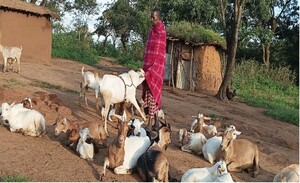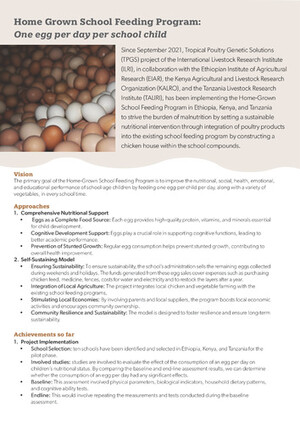
Defining smallholders' sheep breeding objectives using farmers trait preferences versus bio-economic modelling
Abstract
In this study we defined smallholders’ sheep breeding objectives using farmers’ trait preferences through a proportional-piling tool and a bio-economic model to evaluate the congruence between the two breeding objectives. We took Menz sheep of Ethiopia as a case study. Multinomial logistic regression analysis showed that there were no statistically significant differences among weights allocated by farmers to growth rate, survival and lambing interval, which formed the high priority traits for Menz farmers. The likelihood of farmers attaching more weight to these three traits was significantly higher than they do to 6-month weight, mature weight, fleece weight and litter size (odds ratio = 1.16 to 2.32, P < 0.001). The percentage of farmers who allocated the highest weights to 6-month weight, mature weight, fleece weight, litter size, growth rate, lambing interval and survival were 0.0, 2.1, 0.0, 2.1, 37.5, 29.2 and 29.2%, respectively. Survival, lambing interval, growth rate and 6-month weight were found to be the most economically important traits using a bio-economic model. A genetic improvement by one σa in these traits resulted in a profit of Birr 31.80 to 58.68 per ewe per year. The average of the correlations between economic values of traits and individual farmers’ trait weights was 0.591 ± 0.231, indicating a fair congruence between farmers’ preferences for traits and economic values of traits. There is a fair congruence between farmers’ preferences for traits and economic values of traits, both in terms of the rankings of traits and their relative weights. This would indicate that weighting traits in selection indexes with farmers’ trait ratings using quantitative methods such as proportional-piling (a simple visual method suitable for illiterate smallholders) would direct genetic improvement towards desired profitability with reasonable accuracy. Conversely, the fair correspondence between the two methods suggests that bio-economic modelling, if designed properly considering farmers concerns, could fairly be used to reflect farmers’ breeding objectives. However, since both methods suffer from drawbacks, complementary use of farmers’ trait preferences and bio-economic modeling would enable the combination of farmers’ indigenous knowledge and choices and the genetic properties of traits and their accurate economic values. This combined approach would enable to arrive at breeding objectives that would result in rapid and profitable genetic progress while maintaining the adaptability of the local genetic resource. This would involve multiple engagements between experts and villagers unlike the usual one-off survey of farmers’ preferences. Further research on the modalities for complementary use of the two methods to define breeding objectives under smallholder conditions is warranted.
Citation
Gizaw, S., Abebe, A., Bisrat, A., Zewdie, T. and Tegegne, A. 2018. Defining smallholders’ sheep breeding objectives using farmers trait preferences versus bio-economic modelling. Livestock Science










